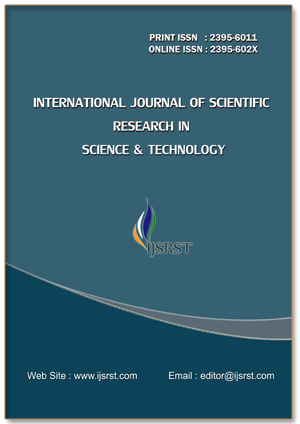Solar Radiation Prediction using Machine Learning
Keywords:
Decision Tree, Random Forest, AdaBoost, Linear Regression, KNN, SVRAbstract
Solar energy being the most abundant and sustainable kind of energy is thus one of the major contributors to the clean energy transition globally. Predictions of solar radiation must be accurate because they optimize the performance of various solar energy systems, such as photovoltaic panels and solar thermal plants. The study at hand has focused on machine learning for the prediction of solar radiation extensively. Solar radiation data for past instances were modelled and trained under the machine learning models based on some other meteorological parameters, geographical and time-related features. The predictive performances of such models were tested in a real environment in different geographic regions and climates. From such an outcome, it is justified that machine-learning algorithms are handy tools for accurately predicting solar radiation levels. In general, these predictions help energy developers, grid operators, and operators of solar energy systems in deciding the optimum generation, distribution, and consumption of energy. The study also highlights the crucial aspect of feature engineering, model selection, and hyperactive parameter tuning in effective prediction.
📊 Article Downloads
References
Benghanem, M., Mellit, A., & Alamri, S. N. (2009). ANN-based modelling and estimation of daily global solar radiation data: A case study. Energy Conversion and Management, 50(7), 1644–1655. https://doi.org/10.1016/J.ENCONMAN.2009.03. 035
Guher, A. B., Tasdemir, S., & Yaniktepe, B. (2020). Effective Estimation of Hourly Global Solar Radiation Using Machine Learning Algorithms. International Journal of Photoenergy, 2020(1), 8843620. https://doi.org/10.1155/2020/8843620
Hejase, H. A. N., Al-Shamisi, M. H., & Assi, A. H. (2014). Modeling of global horizontal irradiance in the United Arab Emirates with artificial neural networks. Energy, 77, 542–552. https://doi.org/10.1016/J.ENERGY.2014.09.064
Jahani, B., & Mohammadi, B. (2019). A comparison between the application of empirical and ANN methods for estimation of daily global solar radiation in Iran. Theoretical and Applied Climatology, 137(1–2), 1257–1269. https://doi.org/10.1007/S00704-018-2666-3
Khatib, T., Mohamed, A., & Sopian, K. (2012). A review of solar energy modeling techniques. Renewable and Sustainable Energy Reviews, 16(5), 2864–2869. https://doi.org/10.1016/J.RSER.2012.01.064
Mohandes, M., Rehman, S., & Halawani, T. O. (1998). Estimation of global solar radiation using artificial neural networks. Renewable Energy, 14(1– 4), 179–184. https://doi.org/10.1016/S09601481(98)00065-2
Moosa, A., Shabir, H., Ali, H., Darwade, R., & Gite, B. (2018). Predicting Solar Radiation Using Machine Learning Techniques. Proceedings of the 2nd International Conference on Intelligent Computing and Control Systems, ICICCS 2018, 1693–1699. https://doi.org/10.1109/ICCONS.2018.8663110
Muneer, T., Gago, E., & Etxebarria, S. (2015). Monthly-averaged hourly solar diffuse radiation models for world-wide locations. Future Cities and Environment, 1(0), 5. https://doi.org/10.1186/S40984015-0008-5
Notton, G., Paoli, C., Vasileva, S., Nivet, M. L., Canaletti, J. L., & Cristofari, C. (2012). Estimation of hourly global solar irradiation on tilted planes from horizontal one using artificial neural networks. Energy, 39(1), 166–179. https://doi.org/10.1016/J.ENERGY.2012.01.038
Pang, Z., Niu, F., & O’Neill, Z. (2020). Solar radiation prediction using recurrent neural network and artificial neural network: A case study with comparisons. Renewable Energy, 156, 279–289. https://doi.org/10.1016/J.RENENE.2020.04.042
Sözen, A., Arcaklioǧlu, E., Özalp, M., & Çaǧlar, N. (2005). Forecasting based on neural network approach of solar potential in Turkey. Renewable Energy, 30(7), 1075–1090. https://doi.org/10.1016/J.RENENE.2004.09.020
Teke, A., Yildirim, H. B., & Çelik, Ö. (2015). Evaluation and performance comparison of different models for the estimation of solar radiation. Renewable and Sustainable Energy Reviews, 50, 1097–1107. https://doi.org/10.1016/J.RSER.2015.05.049
Yaniktepe, B., Kara, O., & Ozalp, C. (2017). The global solar radiation estimation and analysis of solar energy: Case study for Osmaniye, Turkey. International Journal of Green Energy, 14(9), 765– 773. https://doi.org/10.1080/15435075.2017.1329148
Yıldırım, H. B., Çelik, Ö., Teke, A., & Barutçu, B. (2018). Estimating daily Global solar radiation with graphical user interface in Eastern Mediterranean region of Turkey. Renewable and Sustainable Energy Reviews, 82, 1528–1537. https://doi.org/10.1016/J.RSER.2017.06.030
Zhang, J., Zhao, L., Deng, S., Xu, W., & Zhang, Y. (2017). A critical review of the models used to estimate solar radiation. Renewable and Sustainable Energy Reviews, 70, 314–329. https://doi.org/10.1016/J.RSER.2016.11.124
Downloads
Published
Issue
Section
License
Copyright (c) 2025 International Journal of Scientific Research in Science and Technology

This work is licensed under a Creative Commons Attribution 4.0 International License.
https://creativecommons.org/licenses/by/4.0




